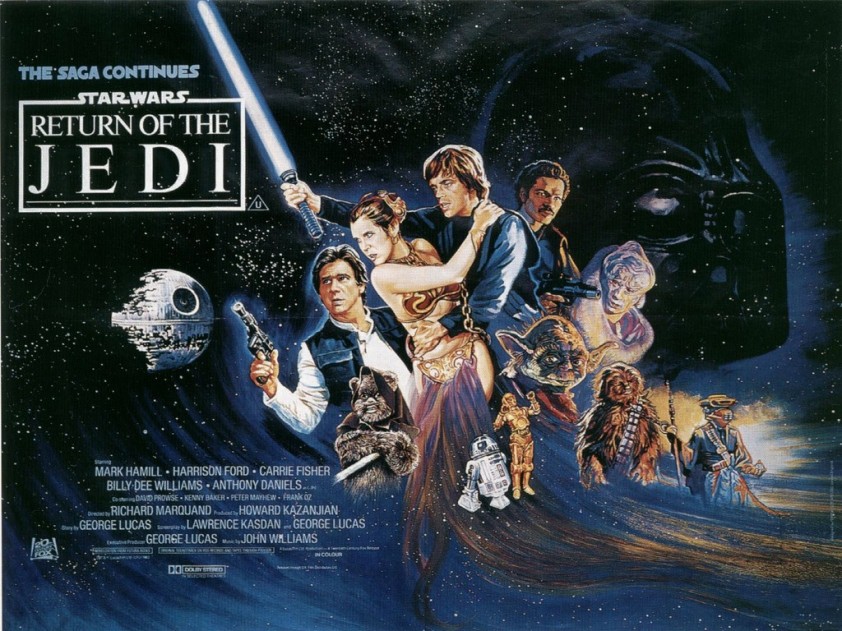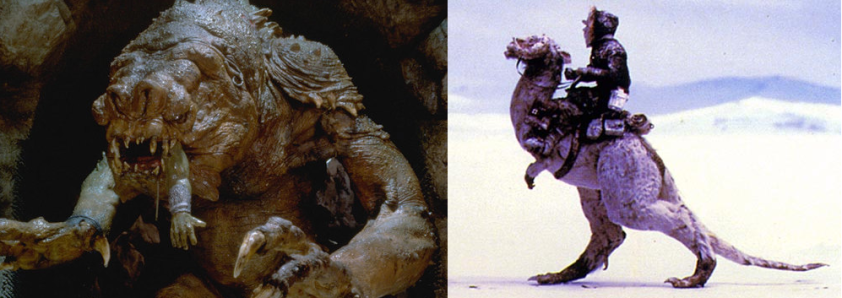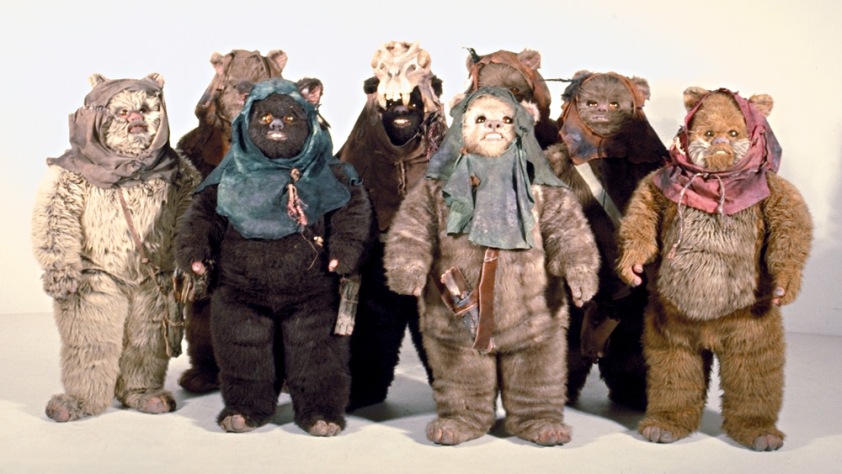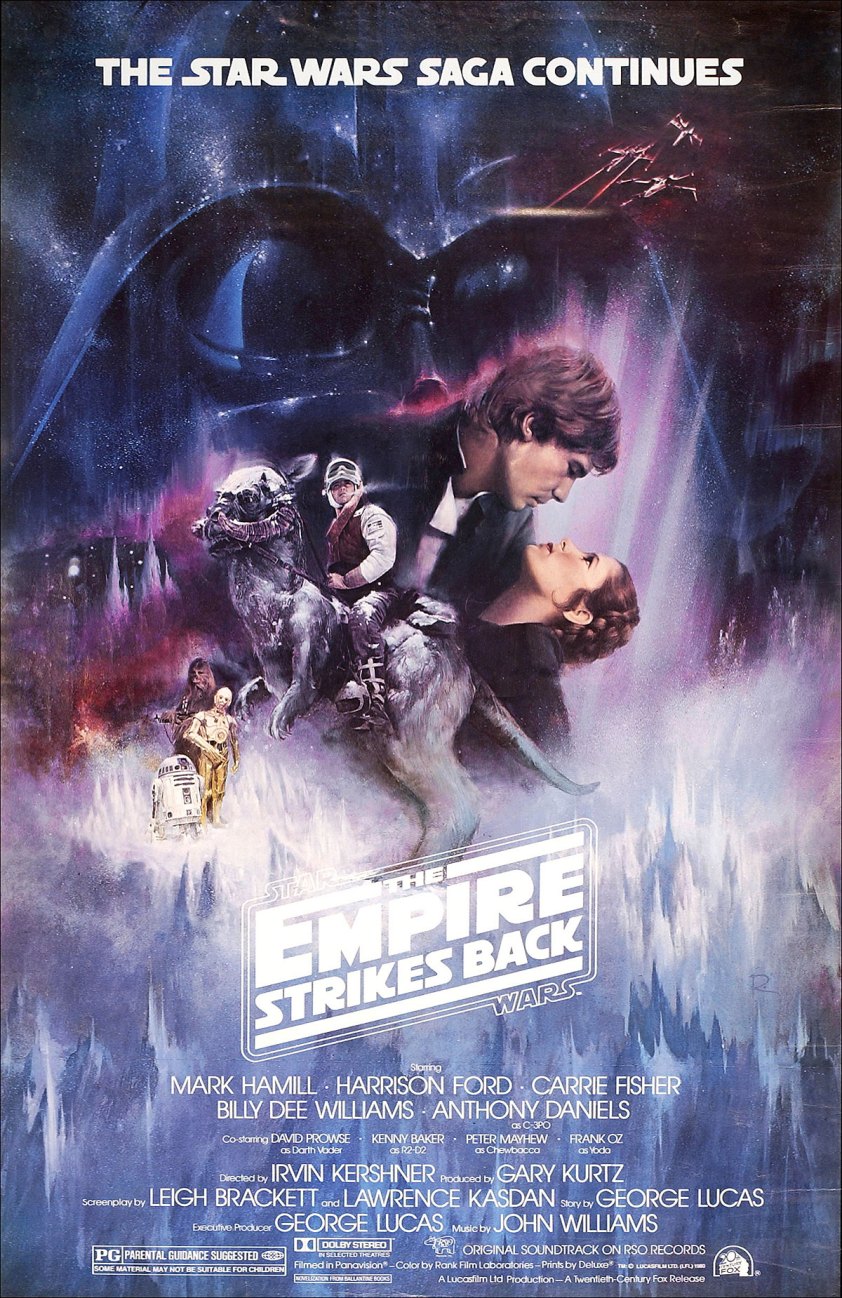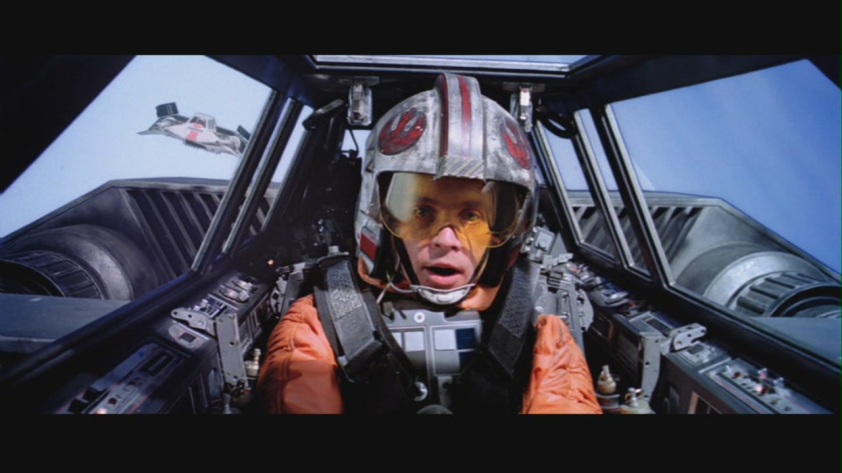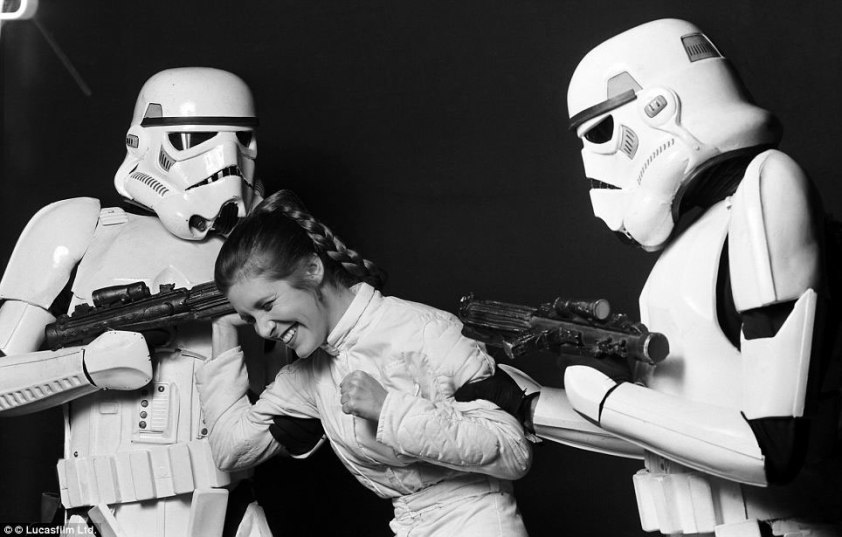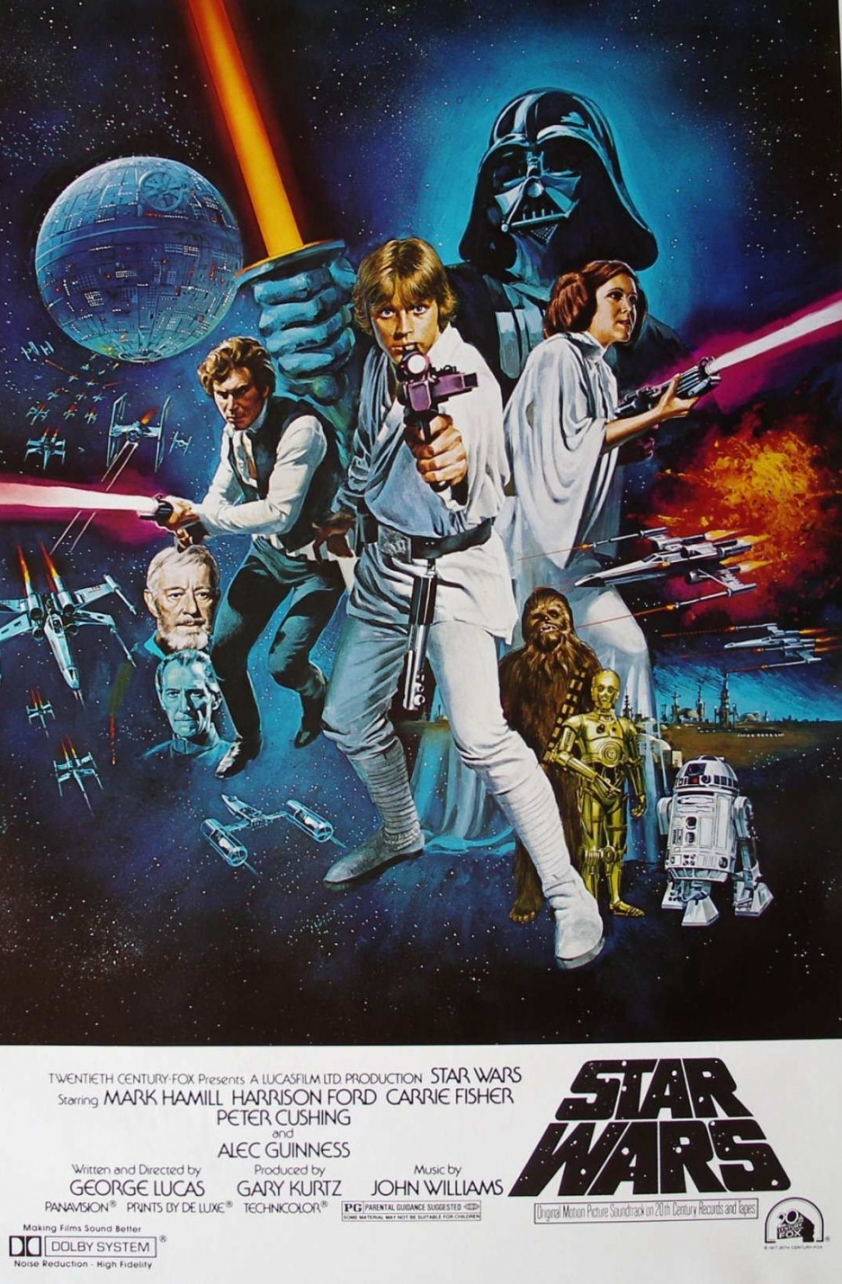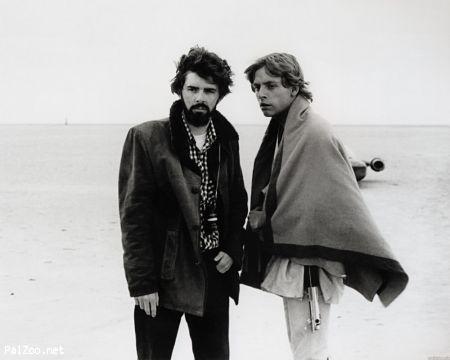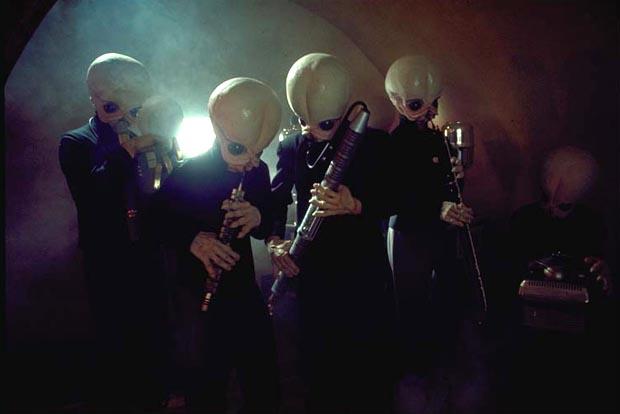WARNING: Some spoilers below – but basically all stuff from the opening titles.
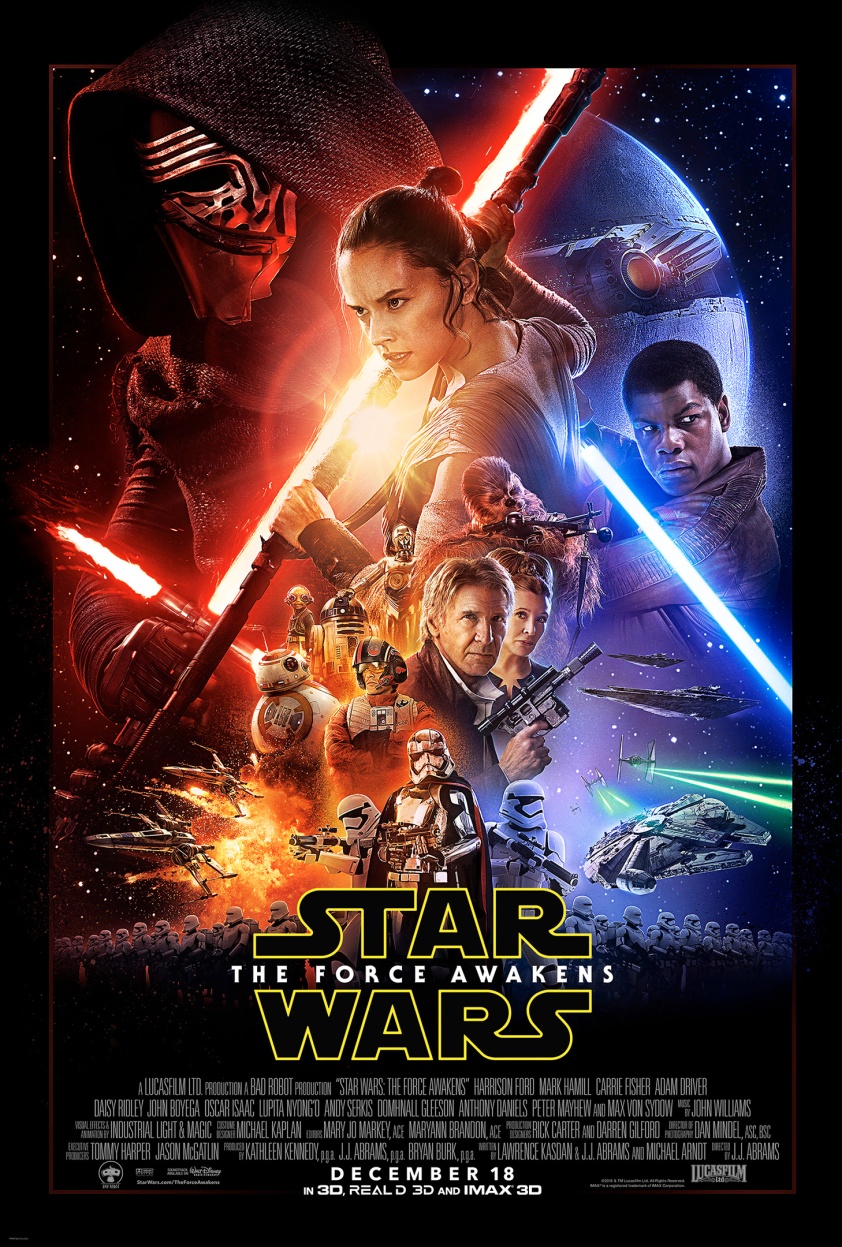
“This will begin to make things right.”
The first line of dialogue in Star Wars Episode VII: The Force Awakens is really for the benefit of the audience, rather than for the character it is spoken to. J.J. Abrams is, in effect, promising that he will heal the pain of the prequels. No more shall the sterility of green screens replace location filming; no more shall talented actors be wasted on characterless characters; no more shall discussions of trade disputes be broken up by computer-generated racial stereotypes stepping in shit.
As for whether he has succeeded in this? Well, let’s just say that it’s finally time to banish that image of Jar Jar stepping in alien shit in The Phantom Menace; it’s finally time to let go of all of that pain. Because, after a decade, the force has finally awoken…STAR WARS IS BACK!!!
Yes, before we delve into the depths of this film, let me reiterate that: Star Wars is back. Regardless of any complaints anybody may voice about this film, it is indisputably true to the character of the original films. Not in a merely superficial manner, either. After all, the Prequels use of screen-wipes, an opening title crawl and lightsabers didn’t compensate for the lack of the essential ingredients of the original films. If anything, they accentuated it. Conversely, The Force Awakens doesn’t just cheaply mimic the original films, it fully and genuinely embraces what made them great. Camaraderie, humour, adventure and, most essentially of all, character – in every sense of the word – have as strong a presence as in A New Hope, in stark contrast to their absence in The Phantom Menace.
Did I mention yet? STAR WARS IS BACK!
As spoiler-free as I can – and bear in mind 30 years have passed since Return of the Jedi, so even the opening titles have stuff that could be considered pretty spoilerific – the story is this:
Luke Skywalker (Mark Hamill) has vanished in mysterious circumstances, whilst the fragments of the Empire have reformed into the nefarious First Order. The fledgling New Republic fights this First Order through the Proxy of The Resistance, headed by General Leia Organa (Carrie Fisher). Leia’s best pilot, Poe Dameron (Oscar Isaac) is dispatched to a remote village on the planet Jakku, with a secret mission that just might bring the Resistance closer to finding where Luke is.
But the First Order aren’t far behind, and just as soon as Poe is able to retrieve the intel he needs from village elder Lor San Tekka (Max Von Sydow), legions of Stormtroopers raze the village to the ground, destroying Poe’s X-Wing in the process. Poe manages to hide the intel in his faithful droid companion, BB8, but is captured by the villainous Kylo Ren (Adam Driver), commander of the First Order.
Without giving away too much more, BB8 soon crosses paths with the stubborn but kind scavenger Rey (Daisy Ridley), and defected stormtrooper Finn (John Boyega). Thus begins an adventure that will change the lives of all three, their paths forever more entwined…
Before discussing anything else, I can say with confidence that with The Force Awakens, J.J. Abrams has succeeded in creating a wonderfully diverse, brilliantly nuanced and incredibly entertaining new set of characters, whilst also surpassing even his Star Trek reboot in terms of casting.
The importance of succeeding in creating strong characters cannot be overstated when discussing Star Wars, for the the original films were only able to succeed because of the strong bond the audience forged with their characters. These movies threw all sorts of fantastical imagery and ideas at the audience – from hammerhead aliens to lazer-swords – yet were driven by grounded, relatable characters whom the audience were able to use as a sort of anchor; people were able to connect with the idea of something like a lightsaber because not only could they see that it was significant for Luke Skywalker, but because they cared that it was to begin with.
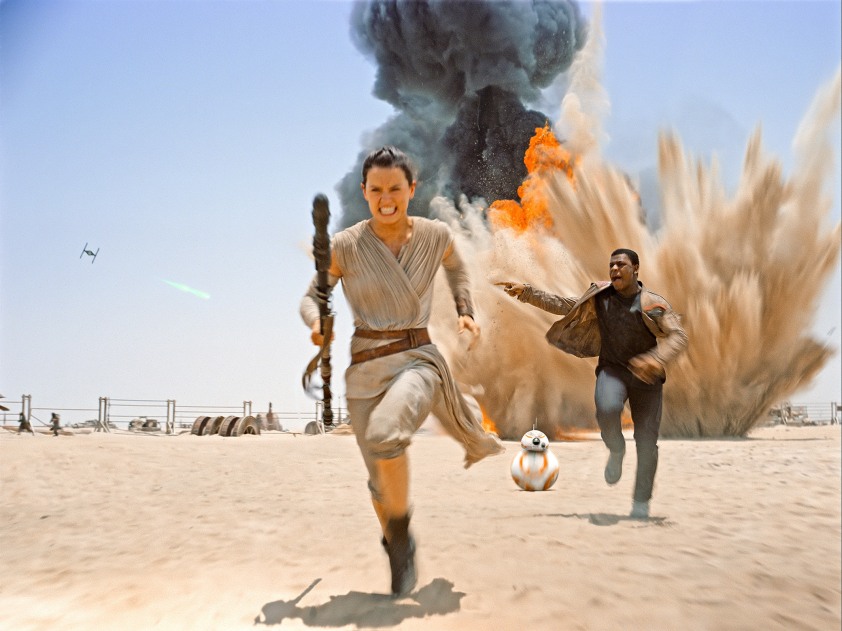
The chemistry between leads Ridley and Boyega is on par with that of the original trio
Finn is bumbling, nervous and frequently overwhelmed by the world around him, yet has a heart of gold; Rey is stubborn and short-tempered, but underneath this resilient shell she is kind, loyal and caring; Poe is charming, roguish and brave. These characters all embody strong, clear traits that the audience can admire, whilst also displaying the weaknesses, struggles and nuances of character needed to make the audience able to relate to them.
Basically, they’re everything that the bland, shallow and ill-defined characters of the prequels weren’t.
Special mention here has to go the new main villian here, Kylo Ren. As the film begins, it may seem like he is merely another villain of the ilk of Darth Vader in A New Hope – strong, confident and already established. However, Abrams and Lawrence Kasdan choose to subvert audience expectations, wisely recognising that it would be impossible to top Darth Vader with another booming-voiced, masked enforcer. Instead, we are treated to a much more raw character, fuelled by inner turmoil and doubt, insecure in himself and his abilities, and prone to fits of uncontrolled rage. Again, all of the new cast are spectacular – Ridley and Boyega both clearly have long careers ahead of them – but Driver steals the show, delivering a performance that is imposing and terrifying one moment, but then emotional, raw and almost pitiable the next.
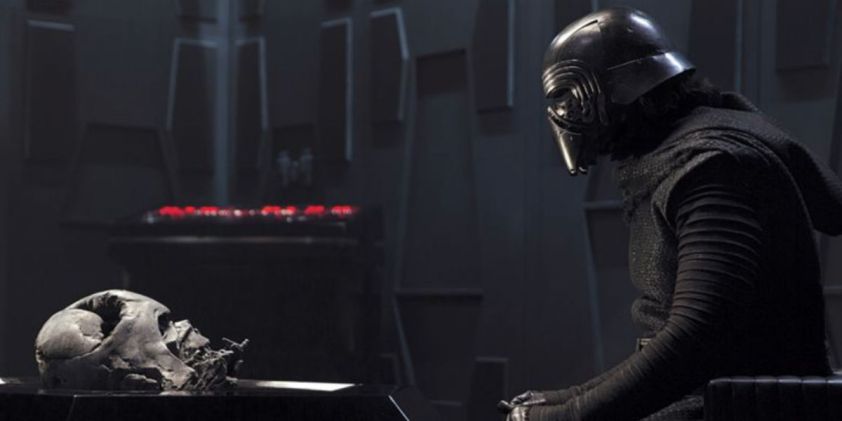
Couldn’t Kylo Ren have just settled for a Che Guevara poster?
Abrams himself has described the character as a sort of inverse Luke Skywalker, with huge untapped potential but who is not quite the finished article – from his unfinished lightsaber to his desperate attempts to imitate Vader’s identity rather than forge his own. Most interestingly of all, whilst Luke struggled against the lure of the Dark Side throughout the original trilogy, here Kylo Ren fights against the call of the light. This offers a fascinating scenario, where the audience is able to see Ren grow alongside our new heroes as the trilogy progresses. The result will hopefully being another timeless villain, with Abram and Kasdan here indebted to the series’ past through the looming shadow of Vader without merely retelling his story.
So yes, exceptional characters. What of the story itself, though?
The only major widespread criticism the film has received is that its story is too derivative of A New Hope‘s. Certainly, the narratives do share the same basic structure, but it is important to remember that Star Wars has always been a simple story of good vs. evil, with the nuance and detail coming from the characters and their relationships. Indeed, A New Hope has a basic hero narrative seen in stories dating aeons back – this idea of a familiar story but with new, never-before-seen worlds and characters is part of what gives Star Wars its unique character, as a modern day myth in its own right. The Force Awakens acts as a continuation of this, through providing familiarity in the overall narrative structure, but exploring new ground with characters we haven’t ever seen before – a defected stormtrooper, a soul-searching sith and even the adorable BB8.
So whilst the basic narrative framework may be very similar to that of A New Hope, these distinctions in character and faction do provide some major difference to how the story is told and how the story feels. For one, the characters here enter the conflict much more deliberately, whereas A New Hope feels more like a series of recurring coincidences and fate mixing a group of reluctant heroes together. The differing relationships and emotional conflict in this film again punctuate the film’s story beats differently from A New Hope, as does the differing role of Kylo Ren as a centrepiece in the narrative and its potential outcomes.
The Starkiller base as a plot device is still nevertheless troublesome, as it does distract from the main plotline – namely, finding Luke. Oh, and whilst Lucas may have envisaged the Star Wars saga as “like poetry – it rhymes,” it nevertheless does seem a bit too much to introduce a third planet-annihilating super-weapon (although it should be noted that the film itself is somewhat self-aware of how absurd this is).
But yes, whilst criticisms of the narrative as derivative do have some merit, they have been overstated.
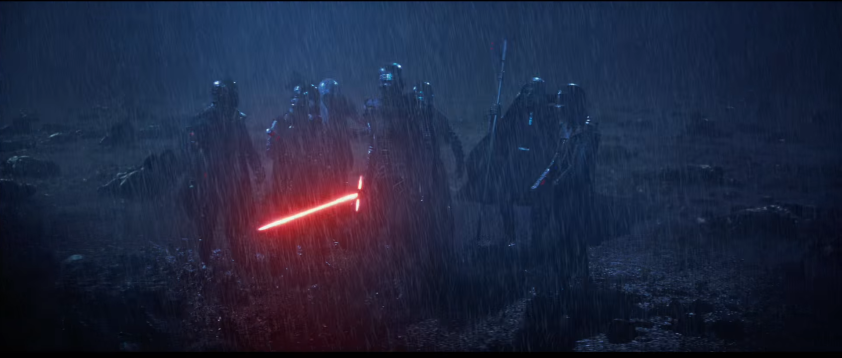
The preen is strong with the Knights of Ren – but who actually are they?
That The Force Awakens is only one part – specifically, the very first – in a trilogy – which must also be remembered when assessing its plotline. Really, this is just as much of a beginning as a self-contained adventure, and it will be possible to more positively or negatively assess its narrative based on how the plotlines it establishes are developed in future films. Morevoer, Abrams cannot be too heavily criticised for opting to establish a safe base for the characters to grow out of, considering the huge pressure on him to succeed here. Ultimately, what the narrative does is allow the new characters to shine and the torch to be passed, whilst introducing new elements to the mythos and new narrative strands for future films – from the elusive Knights of Ren to the idea of an awakening in the force.
The overall feel of the film feels as though is it imbued with the overall spirit of Star Wars, too. It’s difficult to specify exactly what it is that Abrams has recaptured here, but I would venture that is the spirituality of A New Hope. From the reverence that mo-cap creation Maz Kanata (Lupita Nyong’o) displays when she talks of force, to the return of the lightsaber as a sort of rare, holy object (every other scene in the prequels has somebody throwing a lightsaber around).
Aside from the crucial areas of character and story, the film also performs strongly in technical areas. Crucially, Abrams has succeeded in recapturing the physicality and feel of the Star Wars universe. The much-fabled practical effects here really do recreate the rugged feel of the original films, making the audience feel once more as if they are being transported to a foreign world rather than merely the closest to one that a computer can generate. In fact, if I had any complaints with the effects, it would be that too much is still CGI. For one, mysterious big-bad Supreme Leader Snoke (mo-capped by Andy Serkis) jars in the otherwise real-looking world, both due to mediocre-quality CGI but also the fact that his character (without spoiling his design) does not feel like it necessitated CGI. Likewise, I personally would have preferred that the dogfights had used models over CG spaceships.
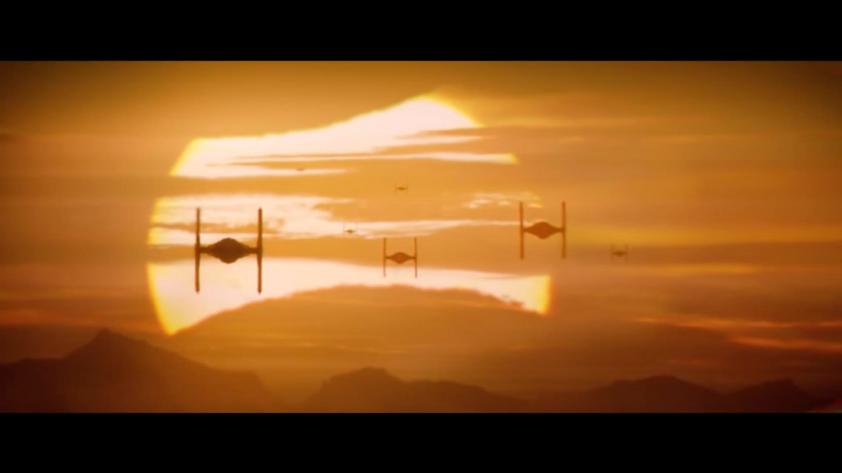
Dan Mindel’s cinematography is stunningly beautiful at times, this shot a nod to Apocalypse Now
Technically, the film’s production values shine through in other areas as well: the cinematography of this film is truly beautiful at times, with many shots looking like paintings; John Willliams soundtrack is as evocative and nuanced as ever; the many costumed creatures in the background all add a sense of scale.
Really, though, any of The Force Awakens‘ technical achievements are secondary to the excellent job that J.J. Abrams has done in re-establishing the Star Wars universe, whilst simultaneously introducing a whole new cast of engaging, fun and likeable characters. The prequels were lifeless and sterile, without character, humour or worst of all, fun. The Force Awakens, conversely, is filled to the brim with all of these and so, so much more. Whilst it may sometimes fail to deviate from the narrative formula of A New Hope, The Force Awakens is just too fun for me to really care. Having reconnected with the spiritual, cinematic and cultural quality that sets Star Wars as so distinct from any other blockbuster, J.J. Abrams has set the stage for a new trilogy that may even rival the original. This is the film you are looking for.
Verdict: 9/10
